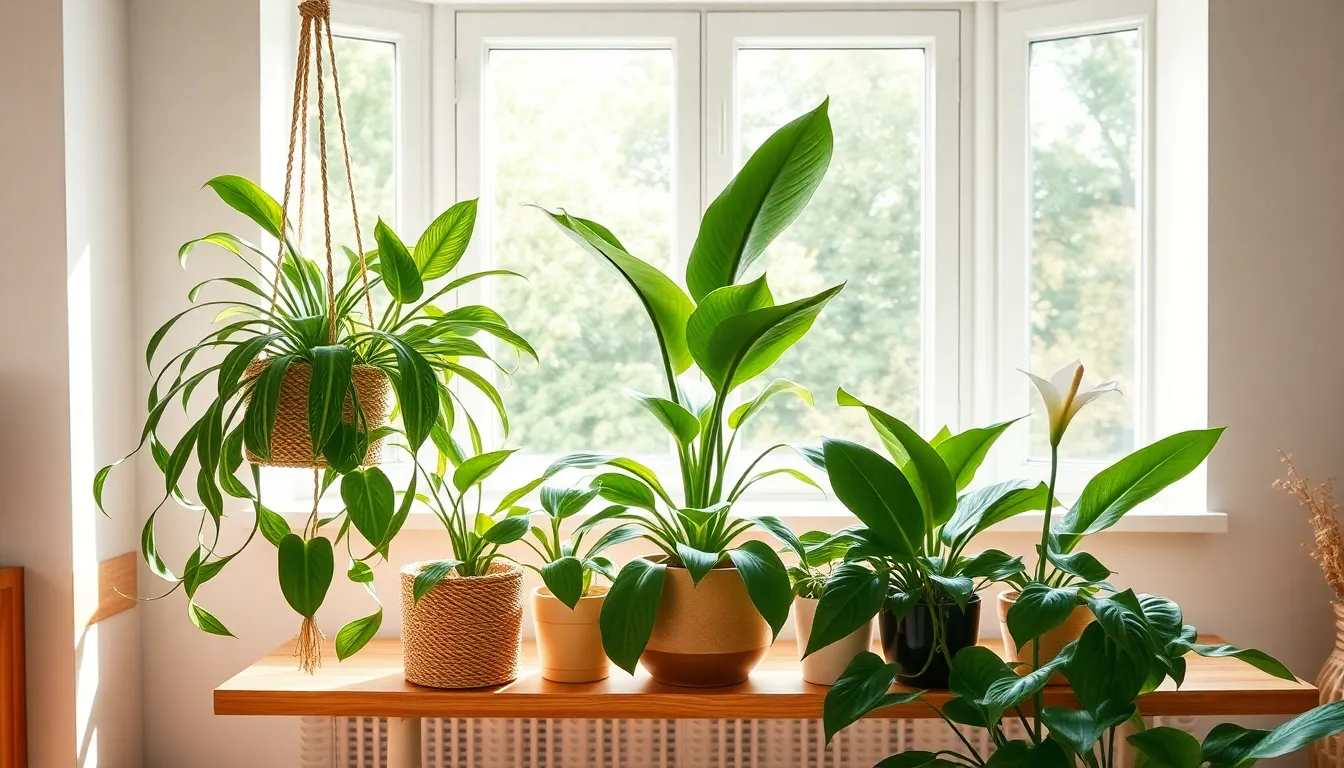Have you ever stepped into a room and felt an immediate sense of calm and vitality? That’s the magic of houseplants at work, and whether you’re just starting your indoor gardening journey or you’ve been nurturing greenery for years, there’s always room to grow—literally and figuratively. In “Top 5 Houseplants for Better Air Quality,” we’ll explore some of the best botanical companions that not only enhance your home’s aesthetic but also purify the air you breathe.
Imagine the satisfaction of watching your plants thrive while they quietly work to improve your living environment. This guide is your ticket to discovering which plants are not only easy to care for but also powerful allies in promoting a healthier, happier home. With each plant we introduce, you’ll find practical tips that ensure success, making you feel like a green-thumbed pro in no time. So, roll up your sleeves and get ready to embrace the joy of gardening as we unveil the top houseplants that will transform your space and your well-being.
Peace Lily (Spathiphyllum spp.)
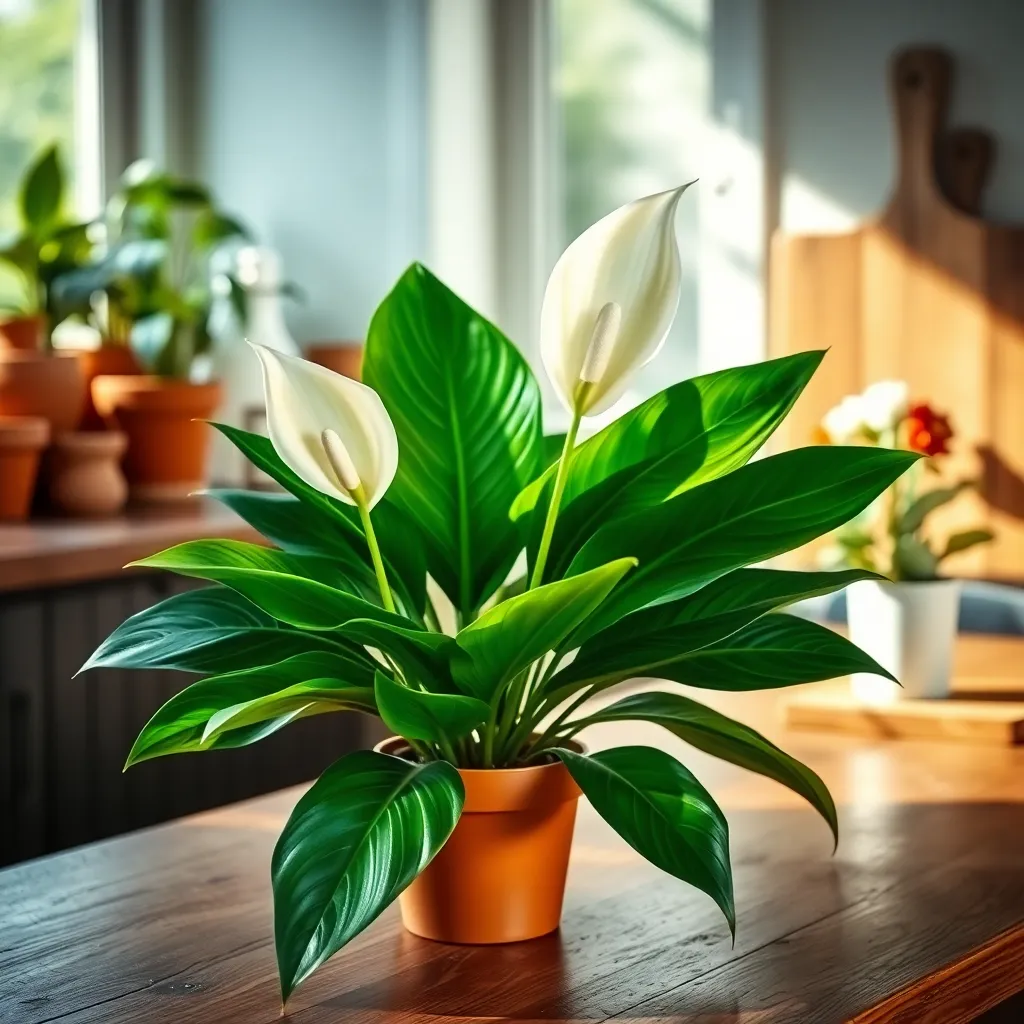
The Peace Lily, known scientifically as Spathiphyllum, is a popular houseplant renowned for its ability to improve indoor air quality. Its lush, dark green leaves and elegant white blooms make it a visually appealing choice for any home.
To thrive, Peace Lilies require indirect sunlight and should be kept away from direct rays that can scorch their leaves. Place your plant in a spot with moderate to low light conditions, such as a north or east-facing window, for optimal growth.
Watering is crucial, as Peace Lilies prefer consistently moist soil, but they do not tolerate waterlogged conditions. It’s best to water them once the top inch of soil feels dry, ensuring excess water drains freely to prevent root rot.
For those seeking advanced care tips, consider repotting your Peace Lily every two to three years to refresh its soil and provide room for growth. Use a well-draining potting mix, such as a blend designed for houseplants, to ensure proper aeration.
Spider Plant (Chlorophytum comosum)
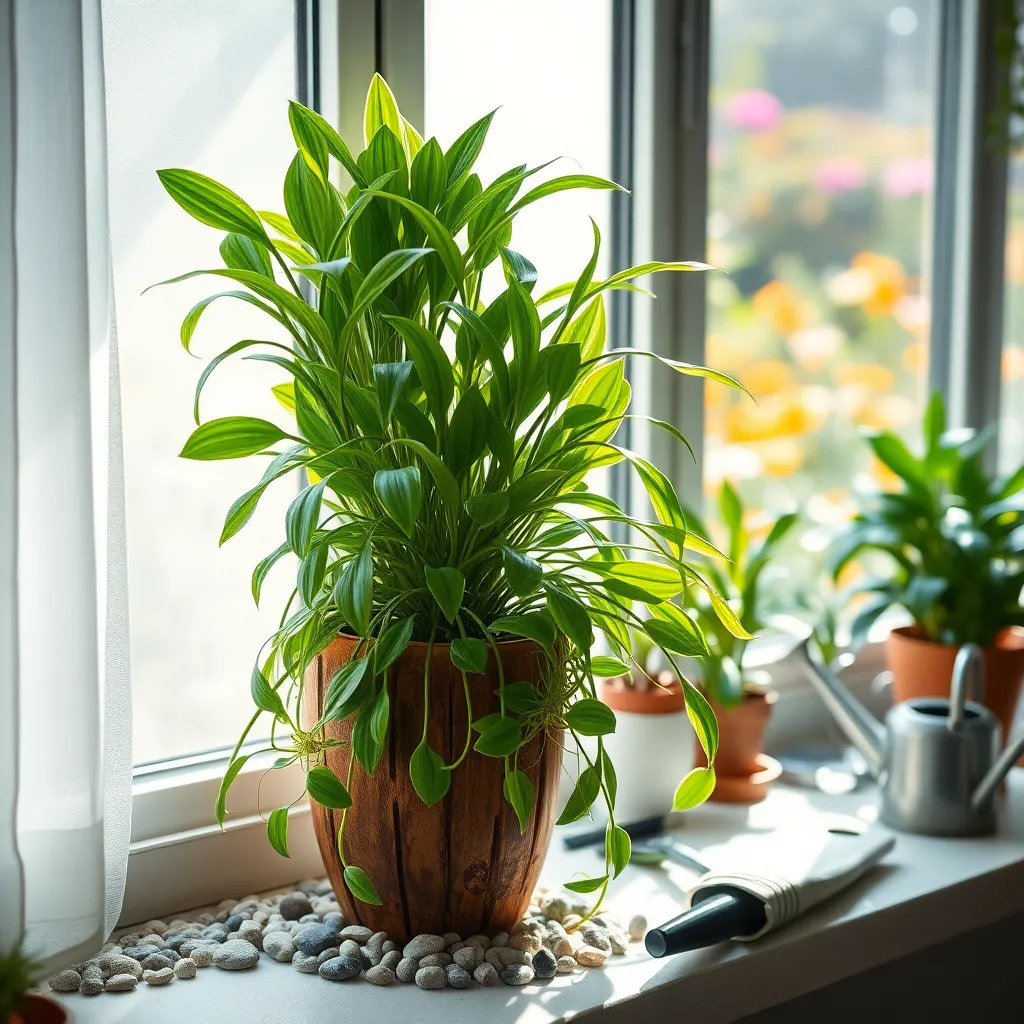
Spider Plant (Chlorophytum comosum) is renowned for its ability to improve indoor air quality by removing pollutants like formaldehyde and xylene. This hardy plant is also perfect for beginners due to its resilience and low maintenance needs.
Place your spider plant in a spot with indirect sunlight to ensure optimal growth. Direct sunlight can scorch its leaves, whereas too little light may stunt its growth, so aim for a balance.
For watering, allow the top inch of soil to dry out between waterings to prevent root rot. Depending on your home’s conditions, this typically means watering once a week, although this can vary with humidity levels.
Use a well-draining potting mix to keep your spider plant healthy, such as one mixed with peat moss, pine bark, and perlite. Fertilize sparingly, applying a balanced, water-soluble fertilizer every 4-6 weeks during the growing season, which can help boost its growth.
For those looking to propagate, simply snip off the baby plantlets that form on the ends of long stems and place them in water or soil until roots develop. This plant also thrives when slightly root-bound, so repot only when necessary to maintain its health and robustness.
English Ivy (Hedera helix)
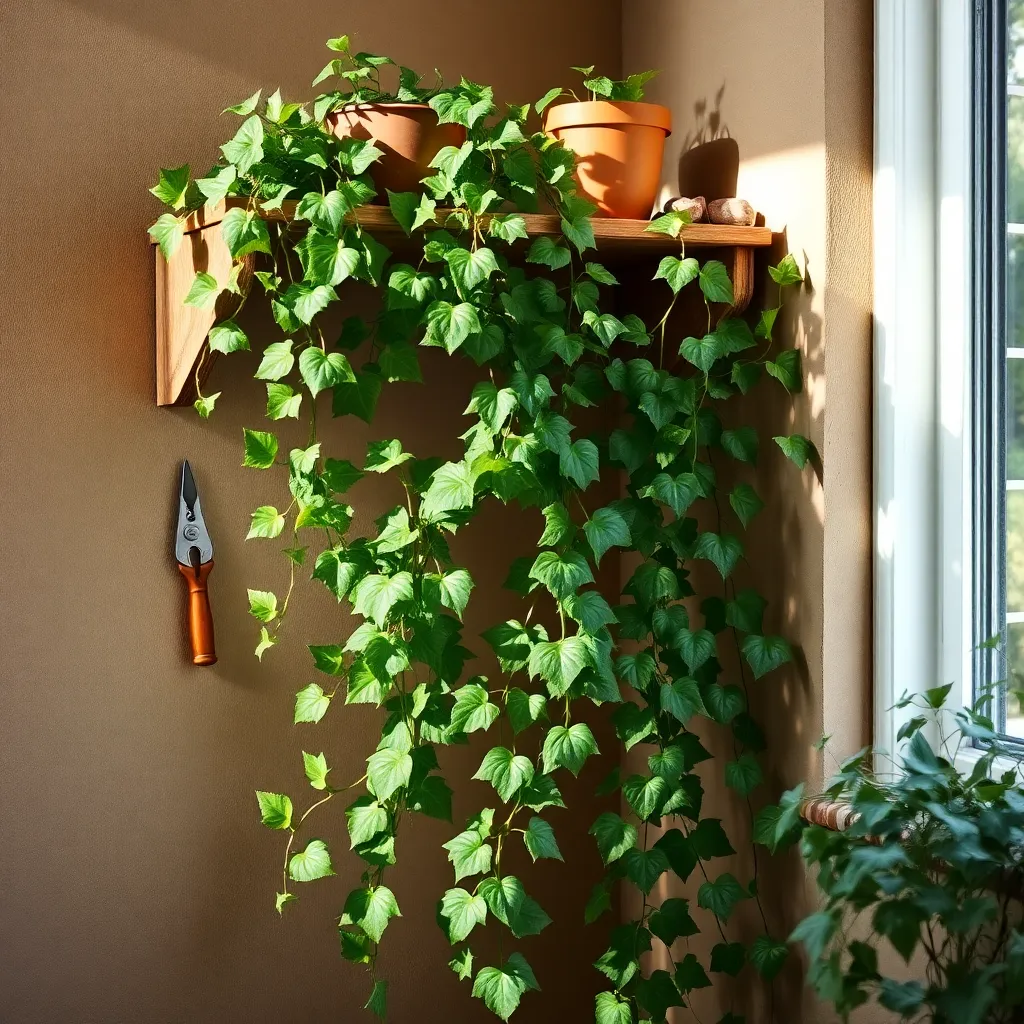
English Ivy (Hedera helix) is not only a classic beauty but also a powerful air purifier, known to reduce airborne mold. It’s a versatile plant that can thrive in a variety of indoor conditions, making it a great choice for improving air quality in your home.
To care for English Ivy, provide it with bright, indirect light to encourage lush growth. Although it can adapt to lower light conditions, its leaves will be more vibrant when given adequate sunlight.
Ensure the soil is well-draining, using a standard potting mix with added perlite or sand to improve drainage. Water the plant thoroughly, allowing the top inch of soil to dry out between waterings to prevent root rot.
For gardeners looking to propagate, English Ivy can be easily propagated through stem cuttings. Simply place a cutting in water until roots form, then transfer it to soil, ensuring a quick and successful start to a new plant.
Boston Fern (Nephrolepis exaltata)
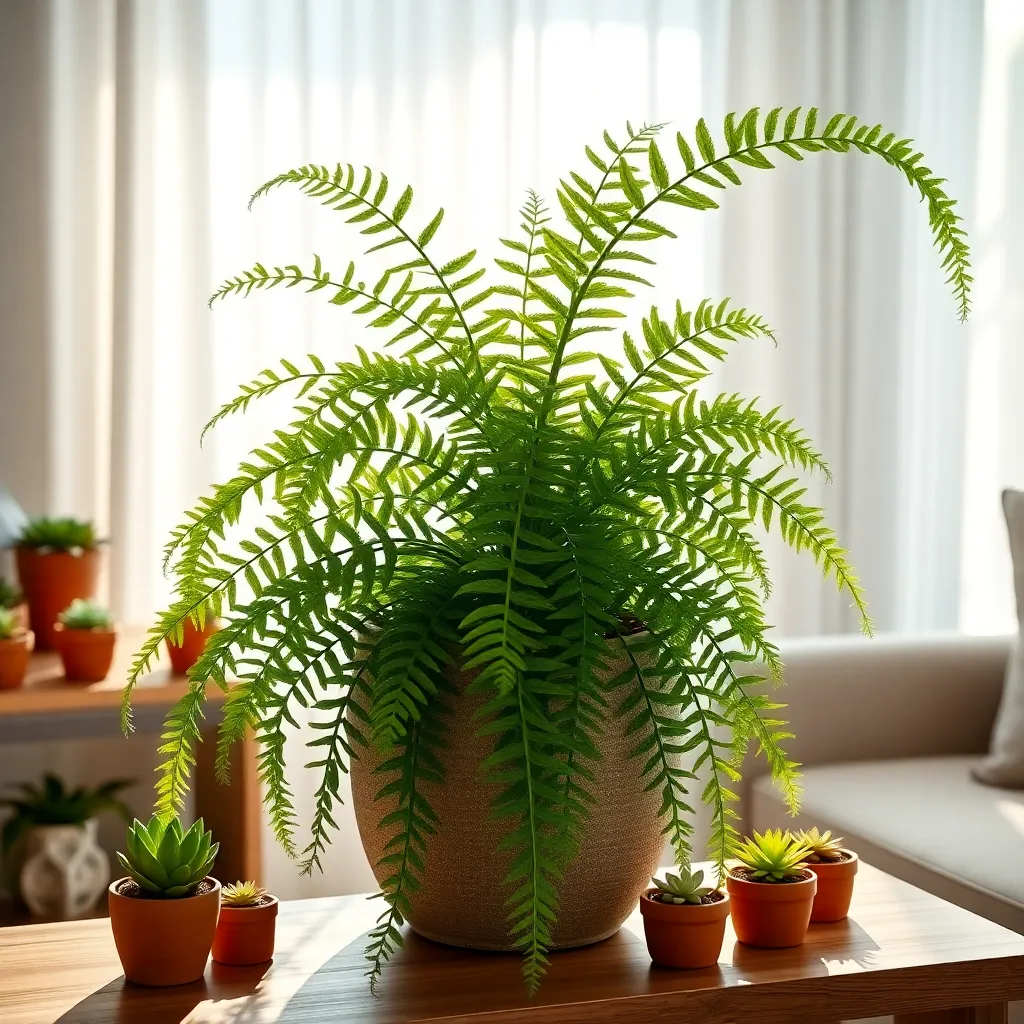
The Boston Fern (Nephrolepis exaltata) is a beloved choice for improving indoor air quality, known for its lush, feather-like fronds. This plant thrives in indirect light, making it perfect for rooms that receive filtered sunlight throughout the day.
To keep your Boston Fern healthy, ensure it is planted in a well-draining potting mix, ideally one that is rich in organic matter. Regular watering is crucial; aim to keep the soil consistently moist but not waterlogged, as overwatering can lead to root rot.
Humidity is a key factor in the success of your Boston Fern, as it prefers a humid environment similar to its native tropical habitat. Consider placing a humidifier nearby or misting the fronds daily to maintain adequate moisture levels.
For those looking to take their plant care to the next level, fertilize your Boston Fern every 4-6 weeks during the growing season with a balanced, water-soluble fertilizer. Prune any dead or yellowing fronds to encourage new growth and maintain the plant’s vibrant appearance.
Rubber Plant (Ficus elastica)
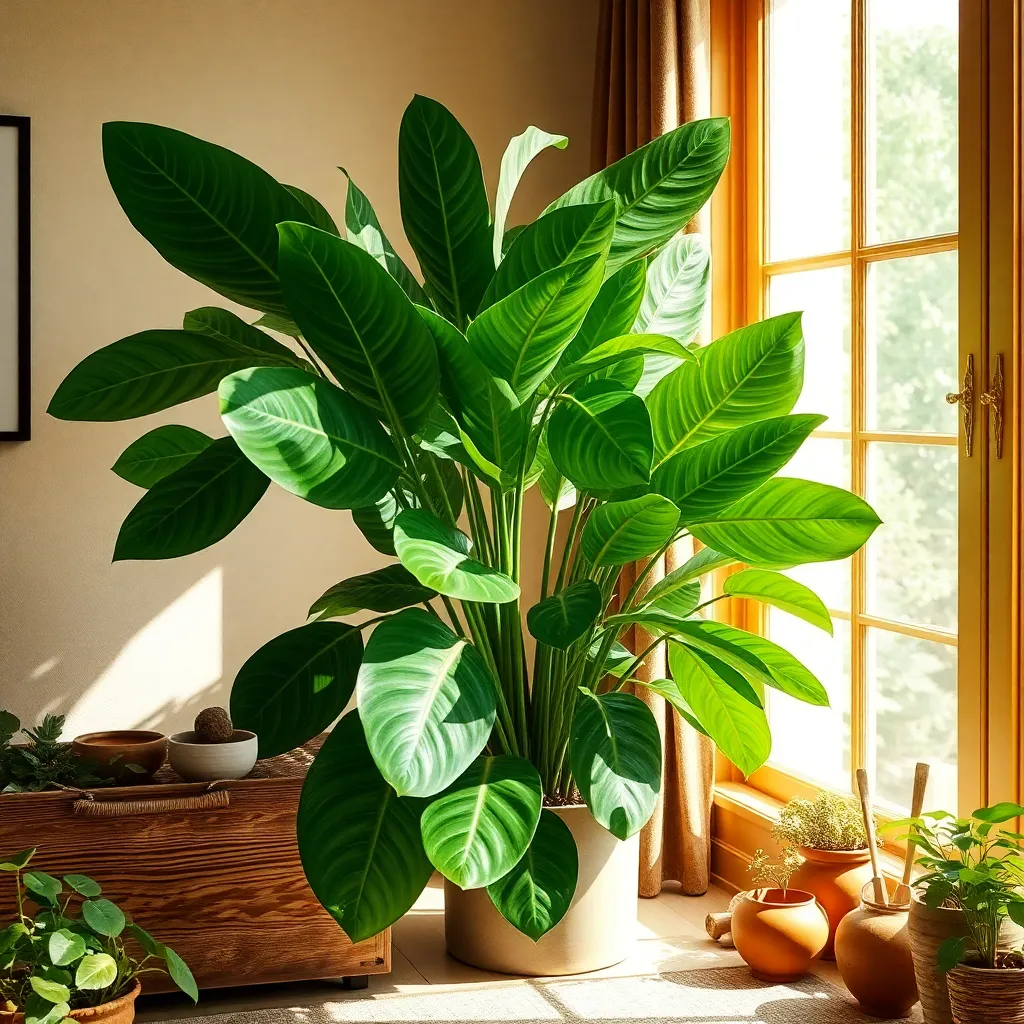
Rubber Plant (Ficus elastica) is a popular choice for improving indoor air quality thanks to its ability to absorb toxins. This hardy plant is not only beautiful but also relatively easy to care for, making it an excellent option for both novice and experienced gardeners.
To thrive, the Rubber Plant prefers bright, indirect light, although it can tolerate low-light conditions. Ensure the soil is well-draining; a mix of peat, pine bark, and coarse sand or perlite works well to support its growth.
When it comes to watering, allow the top inch of soil to dry out before watering again to prevent root rot. During the growing season, typically spring and summer, you can water once a week, but reduce this frequency in the colder months.
Fertilizing every couple of months with a balanced liquid fertilizer will help maintain the plant’s lush foliage. For more experienced gardeners, consider repotting every two years to ensure the plant has enough room to grow and to refresh the soil.
Conclusion: Growing Success with These Plants
In exploring the ‘Top 5 Houseplants for Better Air Quality,’ we’ve discovered how bringing nature indoors can enhance our environments and, in turn, nurture our relationships. From the resilient Snake Plant to the lush Peace Lily, each plant offers unique benefits, such as purifying air, reducing stress, and fostering a calming atmosphere—key elements for fostering healthy connections. We also delved into how the vibrant Spider Plant, soothing Aloe Vera, and ever-popular English Ivy can improve your home’s air quality, creating a more inviting space for open communication and shared moments.
Your next step is simple yet transformative: choose one plant from the list that resonates with you and introduce it into your space today. As you nurture this new addition, reflect on how small changes can make a significant impact on your relationship dynamics.
To ensure you have this valuable information at your fingertips, save or bookmark this article now. By doing so, you’ll have a ready reference to revisit as you continue to cultivate a healthier, more harmonious home environment. Remember, nurturing your relationship is a journey, and every step taken today lays the foundation for a flourishing tomorrow. Embrace these natural allies and watch your relationships thrive.

